In Vyasa and Valmiki Sri Aurobindo refers to a “recent article of the Indian Review” on the date of the Mahabharata war praising it as “an unusually able and searching (or almost conclusive) paper”. It was Velandai Gopala Aiyer’s “The Date of the Mahabharata War” published in Vol. II, January-December 1901 of this monthly journal (Indian Review) edited by G.A.Natesan. Sri Aurobindo was obviously fully convinced by Aiyer’s arguments, because elsewhere he writes, “It is now known beyond reasonable doubt that the Mahabharata war was fought out in or about 1190 B.C.”
Aiyer had published a previous paper in the same journal fixing the date of the beginning of the Kaliyuga from four different sources:
- Vedanga Jyotisha — 1173 B.C.
- Gargacharya — a few years prior to 1165 B.C.
- Classical historians — 851 years before Alexander’s stay in India, viz. 1177-76 B.C.
- which is confirmed by the Malabar Kollam Andu commencing in August/September 1176 B.C.
Aiyer concluded that the Kaliyuga began with the winter solstice immediately preceding the commencement of the Kollam Andu, or at the end of 1177 B.C. The Mahabharata War, he proposes, was fought a few years before the beginning of the Kaliyuga.
One would like to know if any reactions to Aiyar’s research were published in the “Indian Review”. Libraries in Chennai might yield the information. An abridgement is presented in Aiyer’s own words as far as possible.] – Pradip Bhattacharya
~*~
According to the Mahaprasthanika Parva and the Vishnu Purana, the Kali age would not affect the earth so long as it was touched by Sri Krishna’s holy feet. When the Pandavas abdicated, Parikshit must have been about 16 years old (the age of majority according to Hindu lawyers). If Kali began in 1177 B.C., Parikshit would have probably been born in 1193 B.C. and the war should have occurred towards the end of 1194 B.C.
Again, the Mausala Parva says that the Yadava race was destroyed 36 years after the war and the Pandavas left soon thereafter at the beginning of Kaliyuga. On the other hand, the Bhagavatayana Parva states that Kali began at the time of the war itself. The Ashramavasika Parva states that when 15 years had expired after the war, Dhritarashtra, Gandhari and Kunti left for the forest. In the 16th year after the war, the Pandavas visited them along with Uttara who had recently become a mother and had her child in her lap. Now, Parikshit was in the womb during the war (Sauptika Parva), hence he could not have been an infant in the 16th year after the war. Therefore, this statement in the Ashramavasika is incorrect. Rather, in the 16th year after the war the Pandavas started not on a visit to the old people, but on their last journey. There is no mention of Parikshit’s marriage, which would have occurred later. If Parikshit were really 36 years of age when the Pandavas left, why should he be placed under the tutelage of Kripacharya as stated in Mausala Parva? It would be more consistent if Parikshit was about 16 when he was crowned, and the war took place 16 years before the beginning of the Kaliyuga. This conclusion is supported by other evidence.
Kalhana Pandit’s Rajatarangini, the well-known history of Kashmir written in 1148 A.D., is the only indigenous work in India that can pass for history. Verses 48-49 of the first Taranga state:
“Misled by the tradition that the Bharata war took place at the end of the Dwapara, some have considered as wrong the sum of years (contained in the statement that) in the Kaliyuga the kings beginning with Gonanda I (and ending with Andha Yudhishthira) ruled of the Kasmiras for 2268 years.”
This Gonanda I was, says Kalhana, the contemporary of the Pandavas. The 52nd in descent from him was Abhimanyu, son of Kanishka, whose successor Gonanda III was the first of a new dynasty “which came to power 2330 years before Kalhana’s time” (1st Taranga, verses 52 and 49). In the Rajatarangini the total for the reigns from the end of Andha Yudhishthira—the last of Gonanda III’s dynasty—to Kalhana’s own time is 1329 years, 3 months, 28 days, say roughly 1330 years. Kalhana would have presumed that the interval between the end of Abhimanyu’s reign and that of Andha Yudhishthira was 2330-1330 = 1000 years.
Clearly, in Kalhana’s time it was believed that 2268 years had elapsed from the time of Pandava Yudhishthira to that of Andha Yudhishthira. Hence, Kalhana gives 2268-1000 or 1268 years for the reigns of the first 52 kings from Gonanda I to Abhimanyu and 1000 years for the 21 kings of the dynasty of Gonanda III. This was the “tradition” Kalhana refers to in the excerpt above. The latter portion may well be a later addition because Kalhana himself says it is “thought” that the 52 kings down to Abhimanyu reigned in all “for 1266 years” (verse 54, Taranga I—obviously an error for 1268 years).
However, Kalhana accepts only part of the old “tradition”, namely that 2268 years elapsed from the time of Pandava Yudhishthira to that of Andha Yudhishthira. He does not accept the part that Pandava Yudhishthira lived at the end of the Dwapara Yuga because in Kalhana’s time, as now, the Dwapara was supposed to have ended and the Kali to have begun in 3102 B.C. Kalhana relied on Garga’s verse (quoted in Varahamihira’s Brihatsamhita, XIII. 3-4) which he erroneously interpreted as meaning that Yudhishthira commenced to reign 2526 years before the era of Salivahana, in 2428 B.C. As Abhimanyu lived 1268 years after Pandava Yudhishthira, Kalhana placed him in 2448-1268 = 1180 B.C. Since Kanishka and his successor Abhimanyu lived in the 1st century after Christ, the false figures given by Kalhana for Abhimanyu and all the subsequent kings down to the 6th century A.D. can be traced to his mistaken interpretation of Garga’s verse.
Almost all Sanskrit scholars agree that Kanishka lived in the 1st century A.D., though Cunningham thought that the Vikrama era from 57 B.C. began with Kanishka, and the Saka era beginning on 3rd March 78 A.D. dates from him. Coins show that Kanishka reigned down to 40 A.D. Irrespective of whether the era of Salivahana dates from Kanishka, clearly Abhimanyu must have been reigning about the commencement of this era in 78 A.D. If so, Yudhishthira, who lived 1268 years earlier, must have begun to reign about 1268-78 = 1190 B.C. Since his coronation took place soon after the war, it must also have been fought around 1190 B.C.
Aryabhatta — whose fame spread to Arabia as Arjabahr and Constantinople’s vast empire as Andubarius or Ardubarius — was born in 476 A.D. and the first to promulgate the theory that the earth revolved round the sun, calculate the circumference of the earth and explain the eclipses. According to him, “the line of the Saptarshis intersected the middle of Magha Nakshatra in the year of Kaliyuga 1910”, i.e. 1192 B.C. According to the Vishnu Purana, the Sapatarshis were in that very same position at the birth of Parikshit who was, therefore, born about 1192 B.C. Since the war occurred at the most a few months earlier than his birth, it might have taken place about 1193 B.C.
The same result is arrived at if we consider the number of kings who occupied the throne of Magadha from the time of the war to the accession of Chandragupta. According to the Vishnu Purana — which is mostly agreed to by the other Puranas — the 9 Nandas reigned for 100 years; the 10 Saisunagas of the next previous dynasty for 362 years; the 5 kings of the still previous Pradyota dynasty for 138 years succeeding the famous Barhadratha dynasty whose 22 kings sat on the throne since the date of the war. Thus, we get 100 years for the Nanda and 500 years for the 2 previous dynasties. Very probably the same number was reported to Megasthenes. However, what strikes one most is the large average for each reign. The same Vishnu Purana gives 137 years for the 10 kings of the later Maurya dynasty, 112 years for the 10 kings of the Sunga dynasty and 45 years for the 4 kings of the Kanwa line, i.e. an average of about 12 years against 28 for the Pradyota dynasty and 36 for the Saisunaga! For the Nandas, it is scarcely probable that a father and his sons could have reigned for 100 years, especially when the last sons did not die naturally but were extirpated by Chandragupta with the help of Chanakya. The Puranas may have left out insignificant reigns, or these ancient kings may have been longer-lived than those of the post-Chandragupta period, but even then the averages are too large. It would be unsafe to deduce therefrom the probable date of the war.
In England, from the Norman invasion to the 20th century, 35 monarchs had ruled for 835 years, the average being about 23 years. From Hugh Capet to the execution of Louis XVI, France was ruled by 33 kings for 1793-987 = 806 years, yielding an average of about 24 years. 8 kings ruled Prussia from Ivan III @ 23 years. In Russia 22 monarchs up to the present Emperor Nicholas II for 1894-1462 = 432 years giving an average of about 19 years. In Japan, the present Emperor Musu Hito is the 123rd, his ancestor Jimmu Tenno having established the dynasty lasting unbroken for 2500 years, which gives an average of 21 years for this long-lived dynasty. Thus, the averages for each of the 5 foremost powers of our hemisphere are 23 for England, 24 for France, 23 for Germany, 19 for Russia and 21 for Japan. The average of these, about 22 years, may be taken as the probable duration of each reign of the pre-Chandragupta dynasties. There were 22 Barhadrathas, 5 Pradyotas and 10 Saisunagas = 37 in all from the time of the war to the Nandas, and they might therefore have reigned for 37 x 22 = 814 years.
Moreover, according to the Buddhist Mahavamso, composed by Mahanama around 460 A.D., Mahapadma Nanda, called Kalasoka in the chronicle, reigned for 20 years and had 10 sons who conjointly ruled for 22 years. Then there were 9 brothers who reigned for 22 years. Thus, the Nandas reigned in all for 20+22+22 = 64 years, a figure more likely to be correct than the Puranic round figure of 100 years. Thus, the war must have happened about 814+64 = 878 years before Chandragupta, at 878+315 = 1193 B.C.
Against our reckoning of 814 years between the war and Mahapadma Nanda’s accession, the Vishnu Purana (IV.24) gives 1015 years. This seems based on supposing a round period of 100 years from the start of the Kaliyuga to the time of Nanda’s accession and presuming that the Kali began 15 years after the war. If so, the genuineness of an interval of a round period of 1000 years between the beginning of the Kali and the coronation of Nanda is suspect. The Purana period of 1015 years for the 37 kings between the war and the coronation of Nanda yields an improbable average of over 27 years. The author of the Vishnu Purana deals vaguely in round figures, giving 100 for the Nandas, 500 for the Pradyotas and Saisunagas and 1000 years (IV.23) for the Barhadrathas, the last figure directly conflicting with the statement about 1015 years intervening between the war and the end of the Saisunaga dynasty.
This Purana also states that the Saptarshis, which are supposed to move @ one Nakshatra for every 100 years (IV.24) had moved 10 Nakshatras from Magha to Purvashada during this interval, which therefore comes to 10×100 = 1000 years. Obviously, this supposed movement was arrived at by the author not by actual observation, for such a movement is astronomically impossible, but by his deducing it from the other statement in the preceding verse that 1015 years had elapsed during this interval. The author seems first to have had in mind that the Kali began 15 years after the war and that 1000 year elapsed from the beginning of the Kali era to the accession of Nanda, and then to havae deduced therefrom the proposition that the Saptarshis which were in Magha at the time of the war had moved on to Purvashada at the coronation of Mahapadma Nanda.
In Chapter XIII of the Brihatsamhita, Varahamihira, born in 505 A.D., deals with the Saptarshi cycles and quotes Vriddha Garga: “When king Yudhishthira ruled the earth, the seven seers were in Magha; the Saka era is 2526 years after the commencement of his reign.” The translator, Dr. Hultzsch (Indian Antiquary VIII, p.66) comments, “The coronation of Yudhishthira took place 2526 years before the commencement of the Saka era, or at the expiration of the Kaliyuga-Samvat 653 and in B.C. 2448.” This agrees with Kalhana in thinking that the Yudhishthira era is different from the Kali era.
On the other hand, Jyotirvidabharana, an astronomical work attributed to Kalidasa, but which scholars place in the 16th century A.D., states that in the Kaliyuga six different eras will flourish one after another: the Yudhishthira to last 3044 years from the beginning of Kali; the Vikrama to last for 135 years afterwards; the Salivahana for 1800 years thereafter; and the Vijaya, Nagarjuna and Bali ears to be current in the rest of the Kaliyuga. The three last are fictitious. This shows that Hindus have all along thought that the Yudhishthira era commenced with the Kali. So also Aryabhatta computes by the era of Yudhishthira, which corresponds to the Kaliyuga. Therefore, it is not possible to concur with Kalhana and Dr. Hultzsch in placing the beginning of the Yudhishthira era “at the expiration of the Kaliyuga-samvat 653 and in B.C. 2448.”
What does “Sakakala” really mean? It has been proved that Garga, the author of the shloka, lived about 165 B.C. Even granting Dr.Kern’s contention that Garga lived in the 1st century B.C., it is not possible that Garga could have meant by “Sakakala” either the Vikrama samvat, which began later in 57 B.C., or the Salivahana Sakabda, which commenced still later in 78 A.D. It has not yet been proven that the Vikramasamvat era had been in use ever since 57 B.C. Fergusson, Max Muller and Weber opine otherwise. Besides the Kali or the Saptarshi era, there was in the days of Garga only one other prominent era in existence, namely, the era of Nirvana, “which,” says Fergusson (in History of Indian and Eastern Architecture, p. 46), “was the only one that had existed previously in India.” The era of Mahavira beginning in 527 B.C. might have been then in existence, but the Jain religion was only confined comparatively to a few and its era was not much in evidence before the public. The era of Buddha’s Nirvana was, on the other hand, very widely known (being the State Religion during Asoka’s time). A Tibetan work records a schism having occurred under a “Thera Nagasena” 137 years after the Nirvana’ Chandragupta is recorded to have ascended the throne 162 years after the Nirvana; the inauguration of Asoka is stated to have taken place 218 years after the Nirvana; and the Dipawanso, a history of Ceylon written in Pali verse about the 4th century A.D., makes use of the era of Nirvana in its computations. Therefore, the era of Buddha’s Nirvana, which was in current use in the time of Garga, might have been probably referred to by him.
Gautama Buddha was known by the name of “Sakya Muni” and his paternal grandfather was also known by the name of “Sakya”. The race to which Gautama belonged was often called by the name of Sakyas. R.C. Dutt says, “A little to the east of the Kosala kingdom, two kindred clans, the Sakyas and the Koliyans, lived on the opposite banks of the small stream Rohini …Kapilavastu was the capital of the Sakyas.” The followers of Gautama Buddha were often spoken of as “Sakyaputriya Sramanas” in contradistinction possibly to the Sramanas of other sects. We may therefore infer that the era of Gautama Buddha was probably known as “Sakya Kala” in those times. The era could not have been called “Nirvana Kala” as the term might equally apply to the Nirvana of Mahavira.
The shloka is written in the usual Arya metre. Similarly, the first 2 slokas of the chapter are in faultless rhythm, but the third shloka under discussion satisfies the rhythmic requirements in only the first three quarters. The last quarter, shakakalastasya… is short by one “matra”. It is inexplicable how Kalhana and other scholars could overlook such a glaring slip. As the Rajatarangini also makes this mistake, we may infer that the error might have been in existence from a very long time. The only way of correcting the error is by insertion of the letter “Y” which has been somehow omitted, between the letter “K” and “A” in the word “Saka”, correcting “Sakakala” to “Sakyakala” which makes the shloka perfect and then we have the best of reasons to suppose that Garga refers to the era of Nirvana, the epoch of the Sakyas, or of the Sakya prince Gautama, or of the Buddha called Sakya Muni. Some early copyist, better acquainted with “Sakakala” than with “Sakyakala” changed the latter into the former, which he might have thought to be the corrector form. Even without such a correction, “Sakakala” may be considered a corruption of “Sakyakala”. Thus, in any case, the era of Buddha’s Nirvana is the one most undoubtedly referred to.
The expression shadadvikpancadvi means “twenty-six times twenty-five” or 650 and not “six two five two” denoting 2526 as Dr. Hultzsch interprets. The termination “ka” denotes “so many times”, and is not an expletive that a precise mathematician like Garga may be expected to use unnecessarily. Garga computed here by the Saptarshi cycle, which denoted the lapse of every 100 years by a new Nakshatra and gave 25 years for each Nakshatrapada, into four of which a Nakshatra was then usually divided. If the Saptarshis had moved 6 ½ Nakshatras from the time of Yudhishthira’s coronation to the Nirvana of Buddha, that would be more appropriately expressed as the movement of the Rishis through 26 padas and the period denoted thereby would be put down as twenty-six times twenty-five years.
Though Max Muller offers very fair reasons for fixing the date of the Nirvana in 477 B.C., yet as Bigandet points out in his life of Buddha, both the chronicles of Ceylon and Further India unanimously agree that Buddha attained Nirvana at the age of 80 in 543 B.C. The Dipawanso computes by the era of Nirvana beginning in 544-3 B.C. Burma, Siam and Ceylon are all unanimous in giving this date and such widespread unanimity of opinion cannot be expected unless the era of 544-3 B.C. had existed from a very long time.
Garga’s statement now indicates to us that the coronation of Yudhishthira, and therefore the Mahabharata War, took place in the year 544 or 543 + 650 = 1194-3 B.C.
Almost in all parts of India the Brihaspati 60 year cycle prevails from a very long time. In commenting on Taittiriya Brahmana, I.4.10, Sayana says that this cycle comprised 12 of the ancient 5 cycles, which are so often referred to in the Vedic works and in the Vedanga Jyotisha. The sun and the moon take about 5 years to return to the same position at the beginning of a year, which gave rise to the cycle of the 5 years known as Samvatsara, Parivatsara, Idavatsara, Anuvatsara and Idvatsara respectively. As Brihaspati makes a complete circuit of the heavens in about 12 years, all the 3 heavenly bodies were expected to return to the same celestial region on the expiry of every 60 years. Because of a corrector knowledge of Brihaspati’s motions, Northern India has been expunging 1 year of the cycle in every 85-and-65/211 years so that after one such period the name of the next year is left out and the name of the one following the next year is taken to be the next year’s name. As no such practice prevails in Southern India, the current year (April 1901 to April 1902) which is the year “Pramadicha” in the North, is the year “Plava” in the South.
When the names were invented, the year of the Mahabharata War, the only famous epoch in the history of Ancient India, was named “Prabhava”, the name of the 1st year of the cycle. But the dates given by the orthodox for the war or for the beginning of the Kaliyuga do not correspond to the 1st year of the cycle. But, if we adopt the date given by Garga for the epoch of Yudhishthira, i.e. 1194-3 B.C., we find that the corresponding year of the Brihaspati cycle for that date is “Prabhava”, the name of its very 1st year.
We have suggested that the Kaliyuga began at the winter solstice of 1177 B.C. We have also seen that, barring the argument based on Rajatarangini, which gives us about 1190 B.C. for the war, our other lines of discussion point to 1194-3 B.C. as the probable date of the war. This date is further confirmed by the application of the principles of the Vedanga Jyotisha to certain statements contained in the Mahabharata itself. We may here observe that these statements are not to be explained by the astronomical calculations of modern times, for these were unknown in the days of the War, but rather by the calculations of the Vedanga Jyotisha, which, though cruder, are better applicable to them, inasmuch as it is the oldest Hindu astronomical treatise known to us and its astronomical details, as we have seen, relate to the beginning of Kaliyuga.
In the Swargarohanika Parva of the Mahabharata, we are told that Yudhishthira having observed “that the sun ceasing to go southwards had begun to proceed in his northward course” set out to where Bhishma lay on his bed of arrows. After telling Yudhishthira that the winter solstice had set in, Bhishma said, “Yudhishthira, the lunar month of Magha has come. This is again the lighted fortnight and a fourth part of it ought by this be over.” Whatever historical weight may be attached to these statements, they may be at least taken to mean that the winter solstice then occurred on the expiry of the fourth part of the bright fortnight in the month of Magha, that is, on the fourth or the fifth day after new moon. Nilakantha, the commentator, thinks that the expression tribhagashesha pakshah denotes ‘Magha Sukla Panchami’ or the fifth lunar day in the month of Magha after Amavasya, the new moon.
As according to the Vedanga the winter solstice always occurred with the sun in Dhanishtha the Amavasya referred to by the Mahabharata must have occurred with the sun and the moon in Sravana Nakshatra; and as the winter solstice occurred on the fifth day after this, the moon must have been, on the solstitial day, in or near Revati Nakshatra. According to the Jyotisha, this position could have occurred only at the beginning of the fourth year of a five-year cycle, for it was then that the moon was in Aswayuja, next to Revati Nakshatra. The difference of this one Nakshatra is due to the imperfections of the elements of the Jyotisha. Thus we may infer that the winter solstice following the Mahabharata war, and just preceding Bhishma’s death, was the fourth of the five winter solstices of a five-year cycle. The particular five-year cycle in which the Mahabharata war took place appears to have been the fourth cycle previous to the beginning of the Kaliyuga in 1177 inasmuch as we have found that the Rajatarangini points to1190 B.C., and that all other lines of discussion lead to 1194-3 B.C. as the probable date of the War. Consequently, the winter solstice shortly following the War was the fourth of the fourth five-year cycle preceding the commencement of the Kaliyuga, which began, like the five-year cycle, with a winter solstice and with the sun and the moon in Dhanishtha Nakshatra. In other words, the Mahabharata war took place a little before the seventeenth winter solstice preceding the commencement of the Kaliyuga or towards the end of1194 B.C.
To summarize the arguments above set forth:
- We were first enabled by the Vedanga Jyotisha to place the beginning the Kali era approximately at about 1173 B.C.
- After enquiring into the date of Garga and of the Yavana invasion he spoke of, we noted that he fixed “the end of the Yuga” for the retirement of the Greeks from Hindustan. From this statement we inferred that the Yuga, which ended sometime before 165 B.C, must have begun a few years before 1165 B.C.
- In explaining the figures given by the classical historians, we concluded that the Kaliyuga must have begun in 1177-6 B.C.
- The Malabar era furnished us with another authority for fixing the commencement of the Kali era in1176 B.C.
- We found that if the Kali commenced at the winter solstice immediately preceding the year 1176 B.C., the details of the Mahabharata would lead us to place the war at the end of the year 1194 B.C.
- The Tradition recorded in the Rajatarangini, enabled us to fix the date of the war about 1190 B.C.
- From a statement made by Aryabhatta that the Rishis were in Magha in 1192 B.C., we inferred that the war might have taken place at about1195 B.C.
- The average duration of the reigns of the monarchs of the five foremost powers of our hemisphere served to assist us in fixing the date of the war at about1198 B.C.
- From a shloka of Garga quoted in the Brihatsamhita, we inferred that the war occurred in1194-3 B.C.
- We also found that the first year of the Brihaspati cycle of 60 years actually corresponds, as might naturally be expected, to the date of the war as given by Garga, i.e. 1194-3 B.C.
- We applied the elements of the Vedanga Jyotisha to a shloka contained in the Mahabharata, which fixes the day of the winter solstice occurring soon after the war, and concluded that the war should have taken place in the latter part of 1194 B.C.
Thus we find all this cumulative evidence derived from different sources converging to the result that the Kali era began at the winter solstice occurring at the end of 1177 B.C., and that the Mahabharata war took place at about the end of 1194 B.C. In arriving at these conclusions, we had the testimony of the only historian that India can boast of who lived in the twelfth century A.D., of the greatest of the astronomers of India who flourished at the end of the fifth century A.D., of another brilliant astronomer who shone in the second century B.C., and of a versatile Greek historian who was also an ambassador at the court of the first great historic Emperor of India who reigned in the fourth century B.C. We had also the authority of the oldest astronomical work of India which claims to be a supplement to the Vedas, of an ancient era which “forms such a “splendid bridge from the old world to the new”, and of the famous sixty-year cycle. We tested these conclusions by what we may call the common-sense process based on the lists of kings contained in the Puranas. We have met and disposed of the arguments of those that give an earlier date.
So far we have been treading on more or less firm ground. But if we attempt to fix the actual days of the year 1194 B.C. when the War may be supposed to have been fought, our authority will have to be the epic itself, by itself an unsafe guide. The Mahabharata is unfortunately neither the work of one author, nor of one age. It has been recently proposed to start an Indian Epic Society mainly for sifting out the older portions of our incomparable epic. But the labors of such a Society, when brought to a successful termination, will not militate against the authenticity of the texts we are presently to discuss. Most of these belong to the war portion of the Mahabharata, which, according to Weber, is recognizable as the original basis of the epic.
We have already referred to a shloka of the epic, which states that the winter solstice, which took place soon after the war, happened on the fifth day after new moon in the month of Magha. In the very next preceding shloka, Bhishma tells Yudhishthira that he has been lying on his ‘spiky’ bed for the previous fifty-eight nights. Among Hindus it has for long been considered good for one’s future state, for death to occur in the period between the winter and summer solstices. The grand old Bhishma did not allow the arrows sticking into his body to be removed lest he might die before the commencement of the auspicious period, but rather preferred to suffer the excruciating pain, to which one with a less magnificent physique would have speedily succumbed.
The war is expressly stated in the epic (Ashramavasika Parva X.30) to have lasted for eighteen consecutive days. Moreover, in the Dronabhisheka Parva (Sections II and V), Karna is said to have refrained from taking part in the war for the ten days during which Bhishma was the generalissimo of the Kaurava army. In the last chapter of Drona Parva it is stated that Drona, who was the next Commander-in- chief, was slain after having fought dreadfully for five days. Karna led the army for the succeeding two days (Karna Parva I.15), and on the night of the next day (Shalya Parva I.10-13) after Karna’s death, the war was brought to an end. When Yudhishthira was lamenting the death of Ghatotkacha on the fourteenth night of the war, Vyasa told him that in five days the earth would fall under his sway (Drona Parva CLXXXIV.65). From these references also it is clear that the war continued for eighteen consecutive days. As Bhishma was mortally wounded on the tenth day of the war, as the war lasted for eight days more, and as Bhishma is reported to have stated (Anushasana Parva CLXVII.26-27) on the day of the winter solstice that he remained on his bed of arrows for fully fifty-eight nights, the interval between the end of the war and the solstitial day was fifty days. As a matter of fact, this very number of days (ibid. 6) is stated as the period of the stay of the Pandavas in the city of Hastinapura which they entered on the next day after the war (Stri Parva XXVII, Shanti Parva XLI and XLV. Though the Pandavas desired to pass the period of mourning which extended for a month outside Hastinapura vide Shanti Parva I.2, their intention seems not to have been carried out) until they set out on their last visit to Bhishma on the day of the winter solstice. The epic says:
“The blessed monarch (Yudhishthira) having passed fifty nights in Hastinapura recollected the time indicated by his grandsire (Bhishma) as the hour of his departure from this world. Accompanied by a number of priests, he then set out of the city, having seen that the sun ceasing to go southwards had begun to proceed in his northward course” (Anushasanika Parva CLXVII. 5-6).
After Yudhishthira reached Bhishma, the latter addressed him in these words, “The thousand-rayed maker of the day has begun his northward course. I have been lying on my bed here for eight and fifty nights” (ibid. 26-27). We may therefore conclude that the winter solstice took place on the fifty-first day from the close of the war.
On the next day after the close of war, Sri Krishna and the Pandavas paid a visit to the dying Bhishma, whom Sri Krishna addressed in the following words: “Fifty-six days more, 0 Kuru Warrior, art thou going to live” (Stri Parva XXVII; Shanti ParvaXLI, XLV and LII). One need not be misled by the prophetic nature of this expression and declare it to be of no historic value. It might well have been a fact and put in the form of a prophecy by the compiler of the epic. But it may be asked how Bhishma could have lived fifty-six days after the close of the war, if only fifty days had elapsed from that time to the winter solstice when Bhishma hoped to give up his life-breath. But the explanation appears to me to be simple enough; though the winter solstice occurred fifty days after the close of the war, Bhishma does not seem to have died on the solstitial day, when the arrows were extracted from his body but appears rather to have lingered on till the sixth day after the winter solstice. We have seen that the solstice took place then on the fifth lunar day after new moon in the month of Magha. It was on the sixth day from this, that is, on Magha Sukla Ekadasi, that Bhishma, “that pillar of Bharata’s race,” seems to have “united himself with eternity.” Tradition asserts that Bhishma died on this very day, and our almanacs even now make note of the fact and call the day by name of “Bhishma Ekadasi.” To this day, death on the eleventh lunar day of the bright fortnight of the month of Magha is held in great esteem, and next to that, death on such a day of any other month. Possibly the supposed religious efficacy rests on the memory of the day of the royal sage’s death.
As the fifty-ninth day after Bhishma’s fall corresponded to Magha Sukla Panchami, Revati or Aswini Nakshatra, the day of Bhishma’s overthrow, which took place on the tenth day of the war, happened, in accordance with the 84 principles of the Vedanga, on Margasirsha Sukla Panchami, in Dhanishtha Nakshatra; and the Amavasya preceding it happened on the fifth day of the war in Jyeshtha Nakshatra. As a matter of fact, Dr. G. Thibaut gives this very Nakshatra for the last Amavasya but two of the third year of a five-year cycle, which particular new moon our Amavasya actually is. We may therefore conclude that the war began on the fourth Nakshatra preceding Jyeshtha or in Chitra of the month of Kartica and ended in Rohini Nakshatra in Margasirsa-month.
The Pandavas tried many milder means before they at last resorted to the arbitratement of war; they even proposed to sacrifice their interests to some extent, if war could thereby be averted. Shri Krishna was the last to be sent on a mission of mediation and he started for Hastinapura (Udyoga Parva, LXXXIII.7) “in the month of Kaumuda, under the constellation Revati at the end of the Sarad (autumn) season and at the approach of the Hemanta (dewy season).” According to the commentator and also to the translator, Kaumuda is the Kartica month. As the latter half of autumn corresponds to the month of Kartica, we may be certain that the statement means that Sri Krishna left for Hastinapura in the Revati Nakshatra of the month of Kartica. His efforts at reconciliation having been of no avail, he seems to have returned to the Pandava camp in Pushya Nakshatra for, as soon as he left Hastinapura, Duryodhana asked his warriors immediately to march the army to Kurukshetra (Udyoga Parva CXLII.18), “For to-day the moon is in the constellation of Pushya”. A little before Sri Krishna’s departure from Hastinapura, he proposed to Karna, “In seven days will there be new moon; let the war be begun on that day which, they say, is presided over by Indra.” As the commentator says, “Sakradevatam” denotes the Jyeshtha Nakshatra, which is presided over by Indra. The verse, therefore, indicates that the approaching Amavasya was to happen in Jyeshtha Nakshatra. This serves to confirm our inference drawn from other texts that the Amavasya, which occurred on the fifth day of the war, took place in Jyeshtha Nakshatra. But, to say that the new moon would occur on the seventh day seems to be certainly wrong, for Krishna was speaking to Karna in Pushya Nakshatra and the Amavasya was said to occur in Jyeshtha, the tenth Nakshatra from Pushya. Probably saptamat is an error for dashamat.
The war, however, did not begin in Amavasya as suggested by Sri Krishna for, Duryodhana moved out his army to Kurukshetra on Pushya Nakshatra. The Pandavas too seem to have marched out of Upaplavya on the very same Pushya. Both the contending parties were in such a hurry to march their armies to the battlefield, because Pushya Nakshatra was considered auspicious for such purposes. Yet, it was not possible to begin the actual fighting on the very same day. Much remained to be done before the armies could meet each other in battle array. If Sri Krishna returned from Hastinapura with the answer of Duryodhana on Pushya Nakshatra it is reasonable to allow some time for the marching of troops, for the ground to be cleared, for the pitching of tents, for the divisions of the armies to be properly effected, and most of all, for the allied princes to bring on their respective divisions to the field of battle. It appears to me that all these preliminary arrangements were gone through during the interval of the five days between Pushya and Chitra, in which Nakshatra the fighting actually began. But our epic says that both the parties were prepared for battle on the day when the moon had gone to the region of Magha (Bhishma Parva XVII). The natural interpretation of the expression is that on that day the moon was in Magha Nakshatra. In that case we have to suppose that though the armies were almost ready for war in Magha Nakshatra, the first shot was not fired till after the lapse of three more days. The armies began their march to Kurukshetra in Pusha, were organized in effective divisions in Magha, and actually engaged in battle in Chitra. Or, it may be that ‘Magha’ is an error for ‘Maghava’. The expression then would mean that the moon had entered the region of Indra, that is the star Chitra presided over by Indra. If the emendation proves to be correct we have here another testimony to the correctness of our conclusion that the war began in Chitra Nakshatra.
It must be borne in mind that the epic was cast into its present form more than a thousand years after the date of the war. There are many statements in the epic which conflict with one another, a circumstance which can be accounted for only on this historic basis. One such conflicting statement occurs in the Gadayudha Parva. On the last day of the war Balarama returned to Kurukshetra from his pilgrimage to the banks of the Sarasvati, whither he had gone on the eve of the war in utter disgust with this horrible fratricidal war. He said (Shalya Parva XXXIV.6), “Forty-two days have elapsed since I proceeded forth; I left on Pushya, I have returned in Sravana.” The Epic states expressly that the Pushya Nakshatra on which Balarama went away on pilgrimage was the one (Shalya Parva XXXV.10-15; Udyoga Parva CLVII.16-35) on which the Pandavas set out of Upaplavya to the field of battle. It also certainly implies that the Sravana Nakshatra on which Balarama returned happened on the last day of the war (Shalya Parva LIV.32). If these statements are to be taken as authentic, the obvious inference is that the war, which began with the marching of armies to Kurukshetra on Pushya, came to an end in Shravana forty-two days later.
This conflicts directly with the natural inferences we have drawn from the other statements,namely, that the winter solstice occurred on Magha Shukla Panchami fifty days after the close of the war, that the war lasted for eighteen consecutive days, that the Amavasya which occurred on the fifth day of the war took place in Jyeshtha Nakshatra, and that Sri Krishna left for Hastinapura on his errand of peace on Revati Nakshatra of Kartica month and returned to Upaplavya on the next following Pushya. To avoid such a contingency two explanations of this manifestly corrupt text are possible. We have either to suppose that the statements about Balarama’s departure on the eve of the war and about his return on the last day thereof are spurious as being opposed to the united testimony of other texts, or that the verse under discussion requires a little emendation. In the former case the inference to be drawn from the shloka is that Balarama left for the Sarasvati in Pushya Nakshatra twenty-seven days before the march of troops on the next Pushya Nakshatra to the battle field and that he returned to Kurukshetra in Sravana some days before the close of the war. If, however, the shloka is incorrect, we may best correct it by changing ‘forty-two’ into ‘twenty-four’. If Balarama had left on pilgrimage in Pushya and returned on the last day of the war, that being the twenty-fourth from the day of his departure, the last day of the war would happen in Rohini, a result which is identical with the one we have already deduced from other texts.
There is one other conflicting verse which we shall briefly discuss. On the fourteenth night of the war there was a tremendous battle between the contending parties. It is hinted in the epic (Salya Parva LIV.32) that the moon rose up on that night after three-fourths part of it had expired. This is certainly a mistake; for the new moon having taken place on the fifth day of the war, the moon should have disappeared below the western horizon about an hour and a half before three-fourths of the night was over. On the evening of the fourteenth day of the war, Arjuna’s vow to kill Jayadratha having been fulfilled, the Kurus, burning with revengeful thoughts, continued the strife far into the night. The epic would have us believe that during the first half of the night a tremendous battle raged in total darkness resulting in the death of Ghatotkacha, that both the armies therefore lay down to sleep for some time, and that on the rise of the moon at about three o’clock in the morning, both the sides recommenced their fighting. It is more probable that the war continued for as long as the moon was shining and that the armies rested when the moon had set. The poet was perhaps led to make this mistake by his anxiety to render the night sufficiently horrible for Rakshasa heroes to fight with their powers of illusion.
But, barring these two conflicting statements which too may be explained away, all other texts serve to support our conclusion. We are told that:-
- the winter solstice happened on Magha Shukla Panchami;
- the tenth day battle happened fifty-eight days before it;
- Bhishma, who died on Magha Shukla Ekadasi, gave up the ghost fifty-six days after the close of the war;
- a period of fifty days intervened between the end of the war and the winter solstice;
- the war lasted for eighteen consecutive days;
- the Amavasya, which occurred soon after the commencement of the war, happened in Jyeshtha Nakshatra;
- the armies began their departure to the field of battle in Pushya Nakshatra; and
- Krishna had proceeded to Hastinapura on his mission of mediation on the preceding Revati Nakshatra in the month of Kartica.
All these point but to one conclusion, namely, that the war, which lasted for eighteen consecutive days, concluded on the fifty-first night before the winter solstice.
At present the winter solstice falls on the 21st of December. The Gregorian system, which is the basis of the calendars of all Europe except Russia, Greece and Turkey, involves an error of less than a day in 3524 years. As the war took place in 1194 B.C., or 3094 years ago or 2776 years before the calendar was last corrected by Pope Gregory XIII, we may be certain that the winter solstice which occurred on the fifty-first day after the close of the war, would have happened, as now on the 21st of December (New Style). We may, therefore, conclude that the War commenced on the 14th of October, and was brought to a close on the night of the 31st of October, 1194 B.C. Whether or not this precise date, based as it is on data furnished by the Mahabharata alone, proves to be acceptable to the critical eye of a historian, we may at least be sure that the war took place in the latter part of the year 1194 B.C.
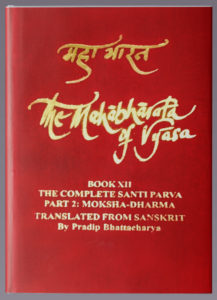
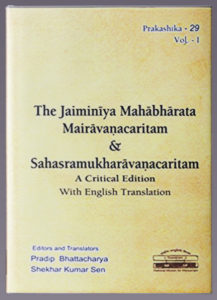
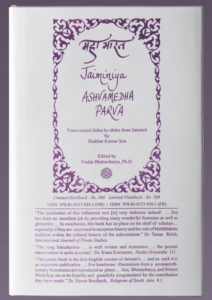
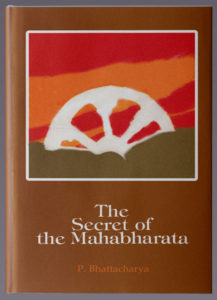
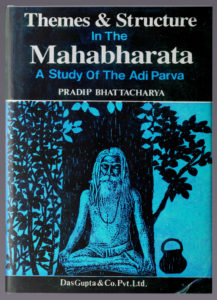
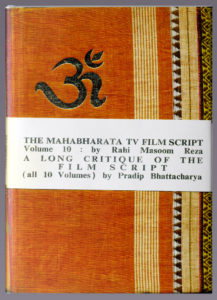
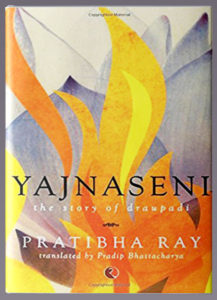
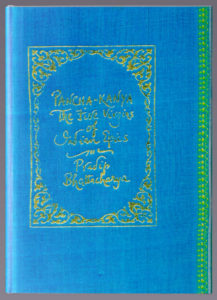
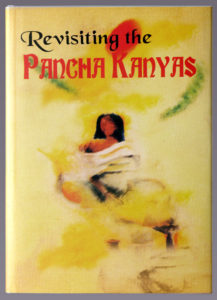
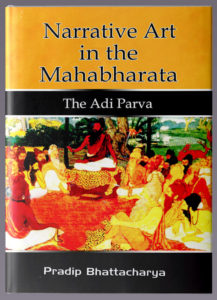
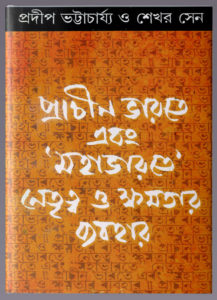
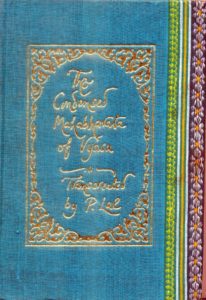 The Condensed Mahabharata of Vyasa by P. Lal, First published 1980, 3rd edn 2010 (Revised and Corrected) Price: HB Rs 600, FB Rs 400
The Condensed Mahabharata of Vyasa by P. Lal, First published 1980, 3rd edn 2010 (Revised and Corrected) Price: HB Rs 600, FB Rs 400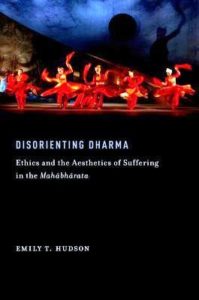
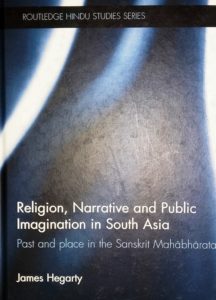 234 pages.
234 pages.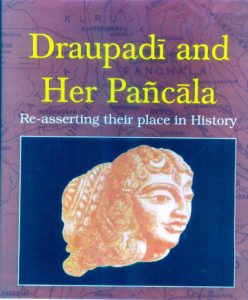
 Sukumari Bhattacharji: The Popularity of the Ramayana and the Mahabharata—A Comparative Analysis. Translated by Tanika Sarkar and Somdatta Mandal. Anustup, 2018, pp. 109, Rs.300/-
Sukumari Bhattacharji: The Popularity of the Ramayana and the Mahabharata—A Comparative Analysis. Translated by Tanika Sarkar and Somdatta Mandal. Anustup, 2018, pp. 109, Rs.300/-